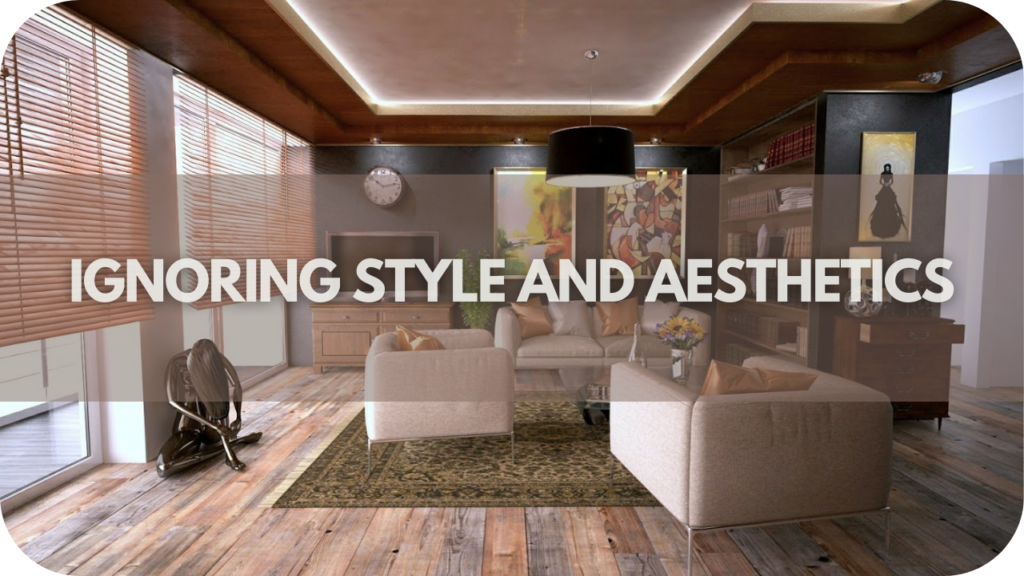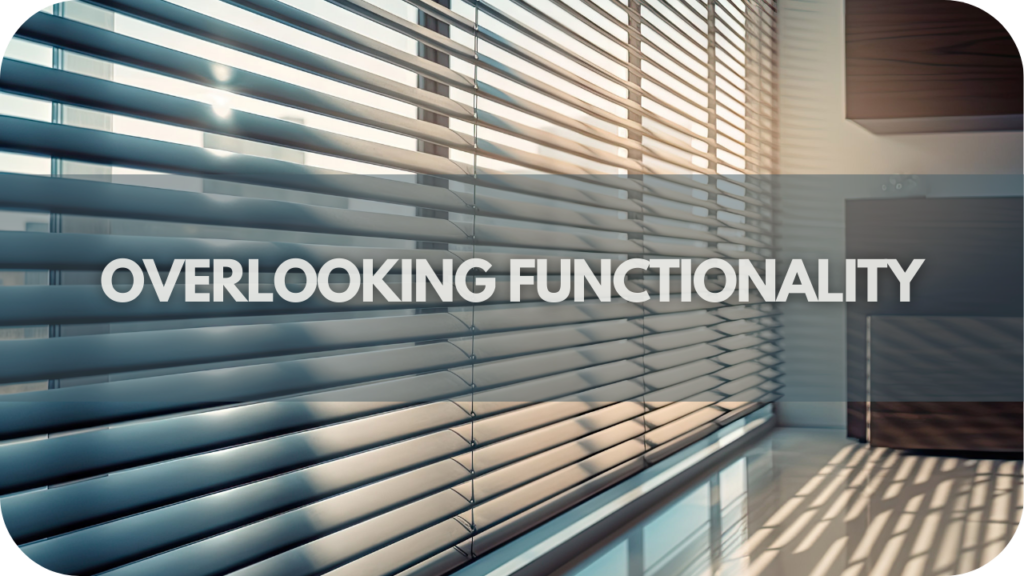Buying blinds can be daunting, especially when unaware of the common pitfalls that can lead to costly mistakes.
Imagine investing in blinds that don’t fit, clash with your décor, or fail to provide the privacy or light control you need. These errors can leave you frustrated and out of pocket.
In this article, we’ll uncover the top 4 scariest blind-buying mistakes and show you how to avoid them, ensuring a stress-free purchase.
1. Misjudging Measurements

One of the most common and frustrating blind-buying mistakes is misjudging measurements. Even a tiny miscalculation can result in blinds that don’t fit your windows properly, leading to gaps, poor coverage, or an unprofessional appearance.
Precise measurements are crucial, as blinds need to fit perfectly to function correctly and look their best.
When measuring, consider whether you want the blinds to sit inside the window recess or outside. For inside mounts, measure the width and height at three points—top, middle, and bottom—to ensure accuracy, as windows can be uneven. Add extra width and height for outside mounts to ensure complete coverage and prevent light from seeping through the edges.
It’s also essential to account for window obstructions, such as handles, locks, or ledges, which can interfere with the blind’s operation if not considered. Additionally, consider the type of window and room when selecting the mount—different rooms may have other light and privacy needs, influencing your choice between inside and outside mounts.
Taking the time to measure accurately, using a steel tape measure, and double-checking your measurements can save you from the costly and time-consuming process of reordering or modifying blinds.
If you’re unsure, consider having a professional measure, especially for larger or more complex windows. This extra step can ensure a perfect fit, avoiding the disappointment of blinds that don’t quite meet your expectations.
2. Choosing the Wrong Material

Selecting the suitable material for your blinds is more than just an aesthetic choice—it’s a functional necessity. Choosing the wrong material can lead to problems such as warping, fading, or even poor insulation, depending on the environment in which the blinds are used.
If you’re installing blinds in a room with high humidity, such as a bathroom or kitchen, avoid materials like wood that can warp or deteriorate over time. Instead, opt for moisture-resistant options like PVC or aluminium. In rooms with significant sun exposure, consider UV-resistant fabrics that won’t fade quickly and will help block harmful rays.
For spaces with critical insulation, such as bedrooms or living areas, thermal fabrics or cellular (honeycomb) blinds are excellent choices. These materials trap air and provide an extra insulation layer, keeping your home comfortable year-round.
Ignoring the material’s durability and suitability for your specific needs can result in blinds that fail to perform their intended function, costing you more in the long run. Researching and choosing the suitable material ensures your blinds will last, maintain their appearance, and provide the comfort and functionality you need.
3. Ignoring Style and Aesthetics

Overlooking the style and aesthetics of your blinds can lead to a visual mismatch that disrupts the overall harmony of your space. Below is what to consider to avoid this common mistake:
- Match Your Interior Theme: Ensure that the blinds you choose complement the overall design of your room. For instance, sleek, modern blinds may clash with a traditional, cosy interior, while richly textured, ornate blinds might feel out of place in a minimalist setting.
- Consider Colour and Finish: The colour of your blinds should blend seamlessly with your walls and furniture or provide a subtle contrast that enhances the room. Neutral beige, grey, or white tones offer versatility and work well with various styles, while bold colours or patterns can be a focal point.
- Choose the Right Material: Different materials convey different vibes. Wood blinds offer a warm, natural feel, ideal for rustic or traditional interiors, while metal or fabric blinds can provide a sleek, modern appearance. Consider how the material will look in your space and how it aligns with the rest of your décor.
- Think About Texture: The texture of the blinds can add depth and interest to your room. For example, woven wood blinds add a natural, organic texture, perfect for a relaxed, coastal look, while smooth fabric or aluminium blinds suit a more polished, contemporary style.
- Consider the Type of Blind: The style of the blind—whether Roman, roller, Venetian, or vertical—can influence the overall aesthetic. Roman blinds offer a soft, elegant look, while Venetian blinds provide a more structured, classic appearance. Roller blinds are sleek and minimalistic, making them suitable for modern settings.
- Integrate with Existing Décor: Look at your room’s existing furniture, fixtures, and colour schemes. The blinds should feel like a natural extension of these elements rather than an afterthought.
- Consider the Room’s Function: The room’s purpose can also guide your style choices. For example, a bedroom might benefit from soft, luxurious blinds that create a cosy atmosphere, while a home office could benefit from streamlined, professional-looking blinds.
4. Overlooking Functionality

While blinds can enhance a room’s aesthetics, overlooking their functionality can lead to significant frustration. Blinds are not just decorative; they serve practical purposes such as controlling light, providing privacy, and improving insulation.
Below are factors to consider when choosing blinds:
Light Control
Choosing the right blinds for light control is essential for creating a comfortable and functional space. Blackout blinds are ideal for rooms where complete darkness is necessary, such as bedrooms and home theatres, as they block out nearly all external light.
Light-filtering blinds are an excellent option for spaces where natural light is desired but needs to be softened. They diffuse sunlight while reducing glare, making them perfect for living areas and home offices.
For those needing versatility, day and night blinds offer dual layers that allow you to switch between blackout and light-filtering modes, catering to changing daily needs.
Venetian or vertical blinds provide precise control over light levels by allowing you to adjust the slats, making them suitable for rooms with varying light conditions.
Motorised blinds enhance convenience by automatically adjusting light levels, ensuring optimal comfort and energy efficiency.
Privacy Needs
Privacy is a crucial consideration when selecting blinds, as different spaces require varying levels of seclusion. Venetian blinds are versatile, allowing you to adjust the slats to control light and privacy. You can tilt them to let in light while still maintaining privacy, making them ideal for living rooms or bathrooms.
For rooms where privacy is a priority, such as bedrooms, blackout or Roman blinds made from thicker fabrics offer more coverage and discretion. On the other hand, sheer blinds provide a light, airy feel but offer minimal privacy.
However, they can be effectively layered with heavier drapes or curtains to create a more adaptable solution, allowing you to adjust privacy levels as needed.
Top-down/bottom-up blinds are another great option. They allow you to lower the blinds from the top for light while keeping the bottom closed for privacy.
Insulation and Energy Efficiency
Blinds can significantly improve your home’s insulation and energy efficiency. Cellular or honeycomb blinds are among the best options for this purpose.
Their unique structure, featuring air pockets within the fabric, acts as an insulating barrier that traps air, helping to maintain a consistent indoor temperature. This design is particularly effective in reducing heat loss during winter and minimising heat gain in summer, leading to lower energy bills.
Thermal blinds are another excellent choice. They are often made with special coatings or materials that reflect heat. They not only keep your home comfortable but also reduce the need for constant heating or cooling.
Additionally, roller blinds with reflective backing can help block out heat in the summer and retain warmth in the winter, making them a practical option for energy-conscious homeowners.
Layering blinds with curtains can further enhance insulation, providing an additional buffer against external temperatures.
Ease of Use
When selecting blinds, ease of use is critical, especially for large or hard-to-reach windows.
Motorised blinds offer a convenient solution. They can be adjusted with a button, remote control, or smart device. This is particularly beneficial for homes with high windows or for individuals with mobility issues, as it eliminates the need for manual operation.
Motorised blinds can be integrated into a smart home system, enabling you to set schedules or control them remotely, enhancing convenience and energy efficiency.
Cordless blinds are another user-friendly option for those who prefer a more traditional approach. These blinds are operated by a simple push or pull mechanism, eliminating the need for dangling cords and making them safer for homes with children or pets.
Top-down/bottom-up blinds offer flexibility in light and privacy control, and their design typically includes easy-to-operate handles, making them practical for daily use.
Conclusion
Avoiding these common blind-buying mistakes can save you time, money, and frustration, ensuring your blinds perfectly suit your home. Take the time to measure accurately, choose the suitable material, consider functionality, and match your décor.
Ready to transform your space? Explore our expert tips and find the perfect blinds today—your home deserves the best!


